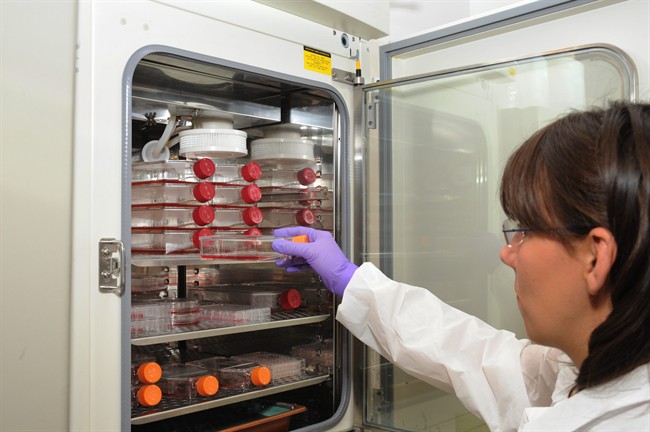WASHINGTON – The National Institutes of Health said it has uncovered a nearly century-old container of ricin and a handful of other forgotten samples of dangerous pathogens as it combs its laboratories for improperly stored hazardous materials.

The agency began an intensive investigation of all its facilities after a scientist in July found vials of smallpox dating from the 1950s, along with other contagious viruses and bacteria that had been stored and forgotten in one lab on the NIH’s campus.
Friday, the NIH said in different facilities, it found small amounts of five improperly stored “select agents,” pathogens that must be registered and kept only in certain highly regulated laboratories. All were found in sealed and intact containers, with no evidence that they posed a safety risk to anyone in the labs or surrounding areas, the agency said in a memo to employees. All have been destroyed.
READ MORE: Texas lab loses vial of deadly virus from Venezuela
They included a bottle of ricin, a highly poisonous toxin, found in a box with microbes dating from 1914 and thought to be 85 to 100 years old, the memo said. The bottle was labeled as originally containing 5 grams, although NIH doesn’t know how much was left.
Ricin has legitimate research uses, the NIH said, but was not studied in this lab.
Also discovered were samples listing pathogens that cause botulism, plague, tularemia and a rare tropical infection called melioidosis.
The NIH does have laboratories that are cleared to use select agents, and those pathogens are regularly inventoried, said NIH director of research services Dr. Alfred Johnson, who oversees agency security and safety issues.
READ MORE: CDC shuts 2 labs, stops shipping dangerous germs after anthrax scare
But these samples were in different labs, mostly in historical collections that scientists once routinely kept in the backs of freezers or on dusty shelves but that today require special handling.
“NIH takes this matter very seriously. The finding of these agents highlights the need for constant vigilance in monitoring laboratory materials in compliance with federal regulations on biosafety,” the agency memo said.
Separately Friday, the Food and Drug Administration reported it had found still another improperly stored pathogen in one of its laboratories – staphylococcus enterotoxin that can cause food poisoning. The vials were in a locked freezer but not in a lab registered to work with select agents. They were relocated to a registered lab, and later destroyed, FDA said.



Comments